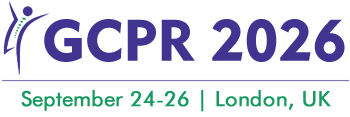HYBRID EVENT: You can participate in person at London, UK or Virtually from your home or work.
Performance Optimization in Rehabilitation
Performance Optimization in Rehabilitation
Performance optimization in rehabilitation is about enhancing patients' physical function to reach their highest potential post-injury or illness. By evaluating an individual’s strength, flexibility, and endurance, therapists develop personalized routines aimed at building resilience and preventing future injuries. This process often involves exercises targeting specific muscle groups, balance training, and flexibility improvements. Tools like wearable technology provide instant feedback on movement, allowing for real-time adjustments to optimize each session. The approach not only restores lost capabilities but also strengthens the body beyond its baseline, empowering patients to resume daily activities with greater ease and confidence.
Committee Members

Jay Spector
American Academy of Podiatric Sports Medicine (AAPSM), United States
Marcia J Scherer
Institute for Matching Person and Technology, United States
Marcos Brioschi
American Academy of Thermology, United States GCPR 2026 Speakers

Blair Gorenberg
Shirley Ryan Abilitylab, United States
Roberta Sartori
IRCCS Materno-Infanitle Burlo Garofolo, Italy
Cho Li Yin
Taichung Veterans General Hospital - VGHTC, Taiwan




Title : Best practice guidelines for the use of pharmacological neuromodulation in disorders of diminished motivation: A comprehensive approach
Vaidya Balasubramaniam, Illawarra and Shoalhaven Local Health District Hospitals, Australia
Title : A forgotten component of knee osteoarthritis
Ron Blehm, EEI Physio LLC, United States
Title : Functional outcomes of DSSA-Based pelvic rehabilitation combined with manual therapy and electrostimulation in men after oncologic surgery: A retrospective case series
Eren Uyar, Fizyomen Physiotherapy & Rehabilitation Center, Turkey
Title : We are living and working in the age of individualization
Marcia J Scherer, Institute for Matching Person and Technology, United States
Title : Efficacy of Inspiratory Muscle Training (IMT) in post-weaning ICU recovery: A clinical randomized controlled trial
Warda Khan, Chongqing Medical University, Pakistan
Title :
Subramanya Adiga, Middlemore Hospital, New Zealand